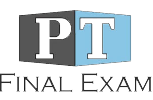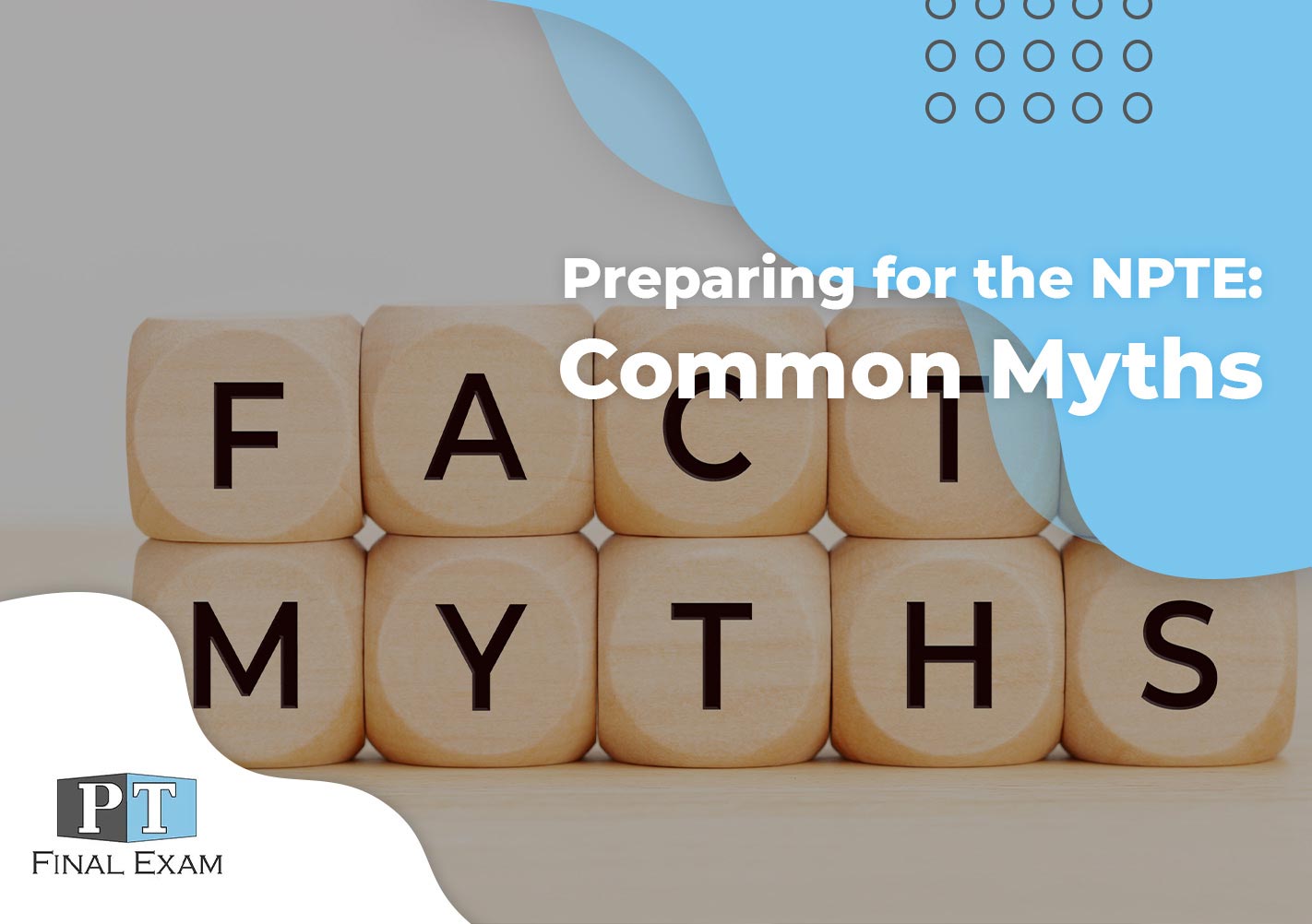 Preparing for the NPTE can be an extremely daunting process. From start to finish, your pathway through the exam will take many twists and turns, and it will be essential to avoid any unwanted surprises.
Preparing for the NPTE can be an extremely daunting process. From start to finish, your pathway through the exam will take many twists and turns, and it will be essential to avoid any unwanted surprises.
I’ve created a list of True/False statements that surround the NPTE and often confuse students. Here we go!
True, the PEAT IS a good indicator of your success on the NPTE.
For those that do not know, the FSBPT publishes a Practice Examination and Assessment Tool (PEAT) to help students prepare for the national board examination. This exam is an online tool that mimics the scope and feel of the real exam, right down to the computer programming and format. Included in the PEAT are 2 distinct practice exams—one is a retired NPTE form that was used in the past as the real exam, and the other is an original practice exam that has the same statistics as the real NPTE. Because these are both created and distributed by the FSBPT, they are an EXCELLENT predictor of your performance on the actual NPTE.
While it’s true that there are students who pass the PEAT and fail the NPTE, the opposite has also happened. The bottom line is that your statistical likelihood of passing the NPTE is highly correlated to your performance on the PEAT. As a part of my Mastermind Review Course, I always recommend that students take the PEAT as a part of their preparations. While it may not be a strict requirement, taking the PEAT towards the end of your exam prep is a great indicator of whether or not you are ready for the exam.
False, the NPTE is NOT a computerized adaptive test (CAT)
This is a surprisingly pervasive myth. The NPTE is NOT an adaptive test. In adaptive testing, the questions will get easier or harder depending on how you answered the previous questions. While the GRE may employ this method, the NPTE is a plain-vanilla, regular exam with 250 pre-determined questions.
Each form of the exam is created to have the same number of items related to the topics described on the FSBPT Content Outline. These are divided into section of 50 questions. In each set of 50 questions, 10 are considered “pre-test” items and are not scored. These “pre-test” items are analyzed and potentially included on future forms. In essence, this is an opportunity for the FSBPT to test-drive questions before using them for the actual NPTE.
False, the NPTE is NOT all about modalities
While the non-systems domain is represented on the exam, many students erroneously think that there will be many, many questions about the modalities. According to the most current version of the FSBPT Content Outline, “Equipment & Devices; Therapeutic Modalities” will have about 12 questions. This represents only about 5-6% of the exam. Is it important to know? Yes! Is it the only thing you should study? Heavens no!
I always tell students to make sure that their studies are proportionate to the content areas. Spend more time on the content areas that are more heavily represented (Musculoskeletal examination—22 questions) and less time on the areas least represented (Genitourinary interventions—1 question). Obviously, it’s important to know it all, but all things need to be done in wisdom and order.
False, you CANNOT cram for the NPTE and still pass
Again, referencing the thousands of students that I have helped through the exam, it is extremely clear that a person cannot just “luck” or “guess” their way through the NPTE. Because the NPTE represents 3 years’ worth of knowledge and material, it is naïve to think that you can just cram a little bit 2 weeks before the exam and pass. I have had a number of sad cases in the past where students procrastinate and put off their studies until it is just too late. In my opinion, you need at least 6 weeks of solid preparation if you are fresh out of school. For anyone who’s training was a long time ago, 3-6 months of preparation is a more realistic target. My Mastermind Program has 8 weeks of intensive review and gives you access to helpful content for 6 months following enrollment. It’s a great option for fresh or seasoned candidates.
True, you need 2 forms of ID to enter the Prometric Testing Center
Be sure to show up on test day with all of your required credentials! You’ll need 2 forms of ID
- Primary Identification—you need a current, valid ID with your name, photo, and signature. Examples of this include a driver’s license, passport, or state ID card.
- Secondary identification—you need a valid, preprinted card with your name on it. Examples include a credit card, ATM card, or school ID card.
- Social Security cards, temporary ID’s, and EXPIRED ID’s are not accepted!!!
If you have problems with identification, you will have to wait 3 MONTHS to take the exam on the next exam date! Be sure to get it right the first time!
Conclusion
Understanding the NPTE process is a challenging task, but is one that must be done in order to navigate it properly. As always, feel free to reach out to me if you have any questions! admin@ptfinalexam.com

